#the Great Baguette Yeasts
Text
Dacshbun Facts

(Art by ktyon3 on Danbooru)
-The genus name for the Dachsbun line is "Panemis Canis." Panemis comes from the old words "Panis" and "Panem, " which both mean bread. Canis is the genus name for canine pokemon. The rough translation for the Dachbun line is "bread dog"
-Dachbun have been with humans for centuries, and are diverged from the Stoutland line and are close relatives of the Slurpuff line
-Dachsbun and Fidough were common Pokemon in Kalos until a civil war that left everyone hungry, when all of them were killed as they were accused of eating all of the bread
-Dachsbun sustain themselves on foods with high sugar as that’s what the yeast in their body needs to keep thriving
-If you have a Dachsbun who just had a litter of Fidough, you might notice they become more aggressive and clingy around them. This is completely normal behavior! Since Fidought hatch too soft for their own good, Dachbun mothers will cuddle around them because the warmth of their body hardens them out
-Dacshbun are the most common evolved pets in Paldea
-Dachsbund were actually bred in a region near Paldea where they were used as hunting dogs. The word Dach actually means badger, since they were used to hunt mustelids (like Furret). They became friendlier and more bread like with the rise of agriculture
-Dachsbun are slightly warm to the touch and make great cuddle buddies

-A lot of people assume they they're like Appletun, where you can pick the pieces off and eat them. Don't do this! That can harm the Dachbun, and unless it's cooked, they're not edible!
-Anyways, yeah. Dachbun can be cooked and eaten
-They pair really well with Growlithe and Arcanine because of their well-baked body and Growlithe/Arcanine's heat
-Despite their body looking and feeling like bread, they still have really short fur all over them (the yellow parts being the exception; the fur is obviously longer there)
-While it might look like their toes are just regular dog toes, those are actually holes in its body! The slits in their toes help them get rid of excess yeast that would cause air bubbles to form
-Daschbun are sometimes nicknamed "Baguette dogs" for their long bodies
-Like fidough, Dachbun still don't have great hearing, so they have a great sense of smell to make up for it
#//region mentioned is a german based region#quill pokefacts#pokemon#pokemon irl#irl pokemon#pkmn irl#irl pkmn#pokeblog#pokeblogging#rotomblr#pokeblr#rotumblr#pokemon roleplay#pokemon biology#pokemon biologist#daschbun#fidough#fairy type#fairy types#fairy type pokemon#pokemon scarlet ans violet#pokemon scarlet#pokemon violet#pokemon sv#pkmn#pokeblogging roleplay
130 notes
·
View notes
Text
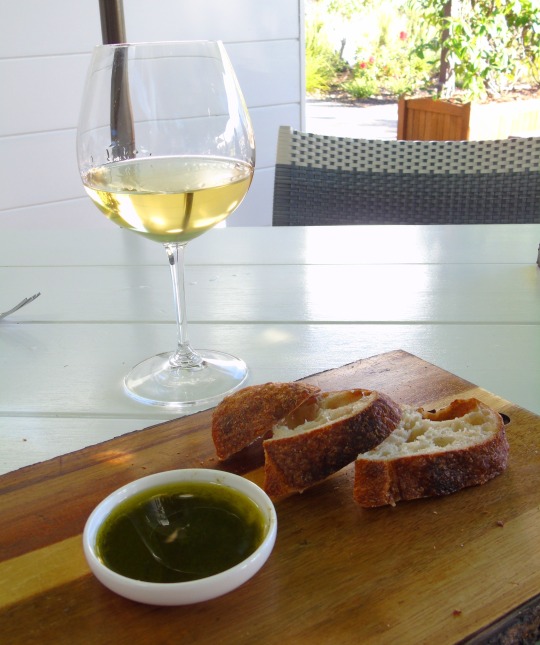
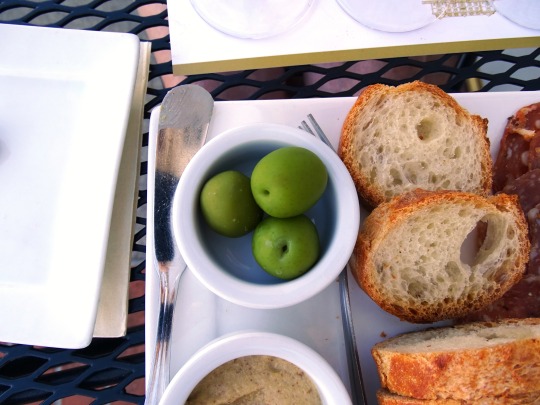
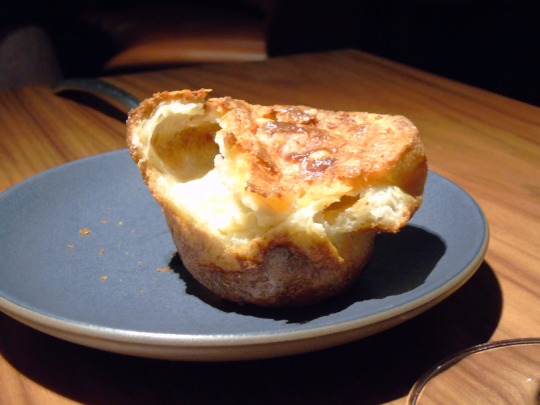





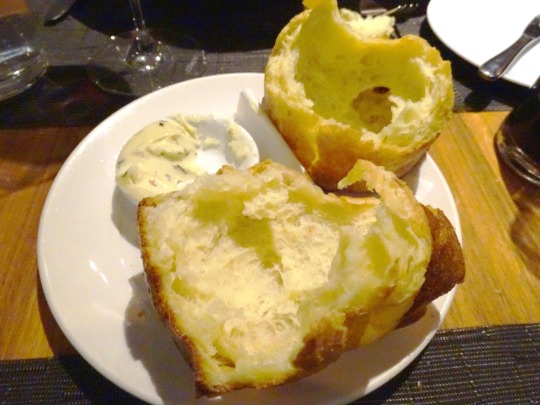

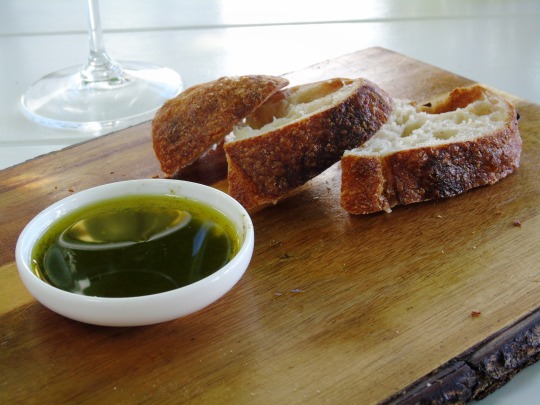
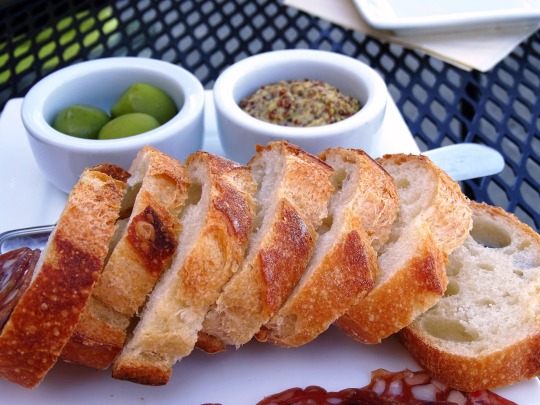


National French Bread Day
Oui, Oui, monsieur – please, pass me another loaf of French bread! Few things are more tantalising than a long, thin stick of French bread (also known as a baguette) enjoyed warm and fresh out of the oven. Its crispy crust and soft center are defining factors for this tasty treat. But before it even comes out of the oven, though, this bread beckons to anyone nearby who can enjoy the smell.
Because they must be eaten fresh, French people typically purchase their baguettes twice a day: one in the morning on their way to work, and one in the evening on the way home. While a little difficult to track, it is estimated by the Observatoire du Pain (The French Bread Observatory) that French people consume 320 baguettes every second of each day!
In fact, access to bread is so vital that, until 2014, Paris lawmakers prohibited certain community bakeries from closing for summer holidays at the same time, lest the entire neighborhood be tragically without bread!
National French Bread Day is a great opportunity to indulge in some classic comfort food at its finest, while also learning a little bit about French culture.
History of National French Bread Day
The French have been baking long sticks of bread for more than 200 years, but it was only in 1920 that the current baguette we know and love came into being.
During that time, a law was passed in France in 1920 that prohibited anyone from starting work before 4am, making it impossible for French bakers to get their traditional breads baked in time before all of the people went off to work. They needed a creative solution to make their bread bake faster, but they didn’t want to cheat their customers.
Voilà, the quick baking baguette was born!
During this time, the innovative French bakers discovered that bread made in this longer shape was actually convenient for cutting as well as for storage. What began as a creative way to speed baking time ended up as a revolutionary way to appreciate bread.
How to Celebrate National French Bread Day
Enjoying National French Bread Day doesn’t have to be complicated. It can be as simple as serving a lovely loaf of French bread warm, slathered with butter and a chunk of cheese on the side. Why not embrace the whole continental experience and have a glass of fine French wine with it? More, s’il vous plaît!
But, for those folks who absolutely love all things French–or those who just love a tasty baguette of French Bread–many more ideas come to mind for celebrating the day:
Learn to Make French Bread Baguettes
Although bread-making can sometimes be tedious, some people might really enjoy the challenge and sense of accomplishment that comes from making their own French Bread.
Traditional bakers of French bread use a starter that has been passed down through generations, which makes it a little difficult to recreate. Still, it’s worth a try!
Many recipes are available online or in cookbooks, but the basic ingredients are likely to include bread flour, sea salt, dry yeast and warm water. In fact, in order to be truly authentic, national law dictates that “French” Bread contains only these four ingredients.
Of course, when making it at home, other creative ingredients, such as seeds for topping, are subject to personal preference.
The steps for making French Bread are fairly simple, including mixing, kneading, allowing time for the dough to rise, and then rolling it into the proper baguette shape. The lack of preservatives make it so yummy–but also mean that it must be eaten right away, so don’t make it unless you’re also ready to eat it!
Dress as a Frenchman (or Woman)
The French are about as stylish and savvy as Europeans come, and their fashion is no exception. However, one specific idea comes to mind when thinking of a traditional French costume: the black and white striped shirt.
Get the look by donning a black and white striped shirt with elbow-length sleeves. Add a pair of plain black or red pants. A set of black or red suspenders would look great too. It might also be fun to draw on a curly mustache (with eyebrow pencil or mascara).
And for those who happen to have a poodle or who can borrow one, well that is certainly taking this costume to the next level. But the most important part of the outfit? The French beret on top, of course!
Once dressed up, if people ask why the costume, then it’s a great opportunity to tell them that it’s time to celebrate National French Bread Day.
Watch a French Film
One excellent way to embrace French culture from afar is to sit down comfortably in front of a French film–with a baguette in hand, of course!
Les Miserables, 2012 musical (based on the 1862 book by Victor Hugo and the 1987 Broadway musical adaptation) starring Hugh Jackman, Russell Crowe, Anne Hathaway and more. In the story, Hugh Jackman’s character went to jail for stealing bread.
La Vie En Rose, 2007 biopic of French singer, Édith Piaf, starring Maria Cotillard (who won an Oscar for the film).
Amélie (The Fabulous Destiny of Amélie), a 2001 fictional tale about a whimsical young woman in Paris who seeks to help those in the world around her.
French Kiss, 1995 romantic comedy starring Meg Ryan and Kevin Kline.
Learn to Speak a Little French
Embracing the fullness of French culture, it’s fun to learn a few French words to practice with friends. Try out these basic words to celebrate National French Bread Day:
Pain (pronounced like the English “pan”): Bread
Bonjour: Hello, Good morning
Au revoir: Goodbye
Oui (pronounced like the English “we”): Yes
Non: No
Merci: Thank you
Enjoy Many Types of French Breads
Of course, the baguette isn’t the only bread that France has offered the world. Those who can locate a nearby French bakery are in luck and may find all kinds of treats to appreciate on National French Bread Day, including croissants, pain au chocolat, brioche, batard, and much more!
Source
#charcuterie board#olives#mustard#salami#jamon#ham#baguette#brioche#Brix Restaurant & Gardens#Jacobs & Co. Steakhouse#Canada#Domaine Carneros#food#appetizer#olive oil#white wine#travel#USA#restaurant#Nick & Stef's Steakhouse#National French Bread Day#21 March#NationalFrenchBreadDay#summer 2022#2019#2018#patio seating#tourist attraction#Napa Valley#original photography
2 notes
·
View notes
Text

Toriel smiled at her friend as he rolled some of their dough out. “Thank you for helping me with this Sans.”
The skeleton grinned back. “no worries tori, this is way easier than it looks.”
“At yeast it’s not pie,” she giggled, “they’re much harder to make.”
“maybe i just knead something sweet” he winked at her, pausing to lean on the rolling pin.
The queen smiled back at him, clearly enjoying this conversation. “Oh rye-lly? This is no loafing matter Sans, you’ll just have to roll with it.”
“i know… bun i can’t seem to shake it, it’s been a real cause of scone and i can’t do muffin about it” He sighed, a tad dramatically, reminding her of the way Papyrus was constantly huffing at their puns. “rye did this have to happen to me?”
She gently patted his head, the way she did Frisk’s, or Alphys’ when she got the chance. “Just con-seed and make some bread, dear, there’s no need to wheat around the bush.”
“will you pay me?” he grinned up at her. “i can give you a pun-per-nickel”
“Nickels?” She chuckled. “No no, we’ll be doing it bi carb.”
“eh, baguette about it.” He shrugged, before starting to roll the dough again. “i bet everyone will love these.”
“I hope so.” She smiled as she returned to her mixing.

As Toriel removed their loaf from the oven, Sans ducked to peek over the counter at it, Toriel looked confused, but ducked down next to him. “What are we doing Sans?”
He winked at her, before putting on a serious air. “this one hasn’t been bread in captivity, if we want to catch it we’ll have to be sneaky.”
Toriel giggled. “Of course, it will seem like a matter of loaf and death for the poor thing.”
Suddenly, a red boot kicked open the door behind them. “DONUT WORRY ABOUT IT!” Papyrus marched in and slammed a bowl down over the bread, covering it. “NYEH HEH HEH! THE GREAT PAPYRUS HAS DONE IT AGAIN!”
-
A secret santa gift for a friend, not sure if they have a tumblr
YES THEY DO @gufaspins
6 notes
·
View notes
Text
Batard bread can be a variation of the well-known French bread, known as a baguette. Whilst ‘batard’ suggests ‘illegitimate’ and it is for that reason observed as inferior to a standard baguette, don’t Permit that misunderstanding divert you from diving into a delectable loaf of freshly baked batard bread.
BATA4D with and Enable it rest and evidence at area temperature for about thirty minutes, right before putting it within the fridge for your cold retard.
Make use of a knife or even a bread lame to attain the loaf correct before baking. Just produce a long slash from one particular finish to the other.
This bread have to be baked inside of a very hot oven so I advise offering it an abundance of time for you to preheat. We also baked our batard with a baking stone in lieu of the baking sheet and placed it in the oven whilst the oven was preheating.
As soon as you can master this essential sourdough batard, you'll be able to go ahead and start out to really make it your own personal. Incorporate your favorite herbs and spices to elevate their taste. You can make them like a sweet batard or maybe a savory batard. You could both incorporate them being a topping or to the bread.
Batard or “50 percent bread” (I’m heading Together with the nicer term on this 1) gets its name from staying the inferior bread to the baguette. Though, I’m seriously unsure why, this bread is equally as mouth watering! Besides being diverse in shape, the recipe is actually the same.
But You can even use a mixer to knead to dough. You’re within your kitchen, there’s no one stopping you from employing a dough kneading equipment. The end result will nevertheless be mouth watering.
This has served being an inspiration for your batard bread recipe that I incorporated in this article. It’s a great e book with many recipes, just as the title says, best for beginners.
If the oven is prepared, take out the dough in the fridge and flip it about on parchment paper. Now, rating the loaf as you like. I am earning a straight slash below.
Batard bread, Despite the fact that lesser acknowledged, differs mainly in measurement from its cousin, the baguette. Batard bread is frequently involving six and twelve inches very long, and much wider, comparable to The form of a football with flat finishes.
2. Stir from the salt Using the flour. As soon as the yeast appears to be frothy, include your flour and salt mixture to the bowl until it is actually properly integrated.
This pre-shaping procedure establishes the muse for the charming rectangular form. Flip the dough seam side down, Carefully tuck The 2 finishes underneath, and produce some pressure by dragging the dough in opposition to your function surface about 10 situations. You will find an in depth demonstration of this method in the accompanying online video. Allow the dough to rest, lined by a towel, for half an hour.
Owing to The point that batard dough features the two yeast and baking powder, this style of French baking creates A great deal lighter loaves than their much more popular counterparts.
In case you are a visual learner like me, you might be in luck! I have well prepared a online video inside the recipe card that will take you thru Each and every step of crafting your quite possess sourdough batard. Be sure to check it out in advance of diving into the next directions. Now, let us start off!
1 note
·
View note
Text
Little Sky Bakery, 170 State St, Los Altos, CA 94022

Little Sky Bakery’s baked goods run large, like large enough to feed a family. I visited their stall inside the State Street Market and spotted loaves of bread (e.g., pain de mie, rye, olive rosemary sourdough, country sourdough, baguettes), sourdough scones, giant cookies, muffins, and sandwiches. Their breads are naturally leavened with wild yeast. The sandwiches are made with their bread.
Tofu & shiitake mando ($7): It’s like a thin-skinned, chewy bun/bao that’s been stuffed and pan fried till golden. The flavors were definitely Asian. The filling is like something you’d find in a dumpling: scallions, tofu, mushroom, ginger I think…really good and a great snack or a light meal. Ample filling!
Baked goods are baked fresh daily at the Menlo Park bakery. They also have a stall at various farmer’s markets.
5 out of 5 stars.
By Lolia S.
1 note
·
View note
Text
The Fascinating Story of Mexican Bread Bolillo
The story of mexican bread bolillo is a fascinating journey that spans centuries and reflects the rich culinary history of Mexico. Rooted in the country's vibrant culture, this humble yet beloved bread has evolved to become an essential part of Mexican cuisine. Originally introduced by French bakers during the 19th century, the bolillo's transformation is a testament to the fusion of diverse influences, resulting in a unique and distinct flavor. From its simple beginnings as a staple in the Mexican diet to its diverse regional variations and cultural significance in celebrations and everyday life, the bolillo continues to captivate taste buds and hearts alike, preserving a slice of Mexico's captivating culinary heritage.
The Origins of Bolillo in Mexican Culture
Bolillo, a quintessential Mexican bread, has a rich culinary heritage deeply rooted in the country's culture. Its history dates back to the early colonial era when European influences began to shape Mexican cuisine. The word "bolillo" itself is believed to have been derived from the Spanish term "bollo," which refers to a type of bread roll. As Spanish conquistadors arrived in Mexico, they brought their bread-making techniques and recipes, which gradually merged with indigenous ingredients and baking methods. Over time, Bolillo became an essential part of Mexican daily life, especially in urban areas, where it gained immense popularity due to its versatility and delicious taste. Today, Bolillo stands as a symbol of tradition and pride, passed down through generations, and enjoyed during various occasions, from breakfast to dinner. Understanding the origins of Bolillo allows us to appreciate the depth of Mexican culinary history and its connection to the country's vibrant cultural identity.
Tracing the Journey of Bolillo's Colonial Influence
To truly grasp the significance of Bolillo in Mexican cuisine, we must explore its journey from Europe to Mexico during the colonial period. The arrival of Spanish explorers in the early 16th century brought an array of culinary traditions, and one of the most impactful was the introduction of bread-making techniques. As wheat production spread in Mexico, bakers adapted their recipes, eventually leading to the creation of Bolillo. The bread-making process fused European traditions, like the French baguette and Spanish bollo, with indigenous ingredients such as corn and local wheat varieties. The result was a unique, crusty exterior with a soft, fluffy interior that perfectly complemented Mexican dishes. Over time, Bolillo not only became a beloved staple in Mexican households but also played a significant role in shaping the country's culinary landscape. Its colonial origins showcase the fascinating interplay between diverse cultures and how this simple bread evolved into an iconic symbol of Mexican gastronomy.
Unraveling the Art of Traditional Breadmaking
Bolillo's allure lies not only in its historical significance but also in the artistry of its traditional bread-making techniques. Achieving the perfect Bolillo requires skill, patience, and attention to detail. The process typically involves basic ingredients such as flour, water, yeast, and salt, but it is the skillful hands of the baker that transform these elements into something truly special. The key to a great Bolillo lies in achieving the right balance of crustiness on the outside while maintaining a soft and airy crumb inside. Achieving this delicate balance is a result of precise kneading, allowing proper fermentation, and the correct baking temperature and time. In many Mexican neighborhoods, you'll find local panaderías (bakeries) that have mastered the art of Bolillo-making, passing down their closely guarded family recipes from one generation to the next. Whether enjoyed with savory fillings for a torta or simply dipped in hot chocolate, a freshly baked Bolillo is an experience that embodies the true essence of Mexican culinary craftsmanship.
How This Iconic Bread Adapted to Changing Tastes?
As Mexican society evolved over the centuries, so did the role of Bolillo in the culinary landscape. From its humble colonial beginnings to the present day, Bolillo has adapted to changing tastes and lifestyles. While the classic version remains a staple, modern variations have emerged to cater to contemporary preferences. Some bakeries experiment with different types of flours and grains to create healthier versions, while others add unique ingredients like cheese, jalapeños, or even chocolate chips for a surprising twist. Bolillo's versatility also extends to its uses, as it serves as a base for beloved Mexican sandwiches like tortas or as a complement to hearty stews and soups. Despite the transformations it has undergone, Bolillo's timeless appeal endures, as it continues to hold a special place in the hearts and palates of Mexicans both young and old.
Reviving a Classic Amidst Global Culinary Trends
In recent years, as global culinary trends have gained momentum, traditional Mexican bread like Bolillo has experienced a well-deserved resurgence. Artisanal baking and appreciation for authentic flavors have put Bolillo back in the spotlight. With a growing interest in regional cuisines and heritage foods, Bolillo's iconic status has expanded beyond Mexico's borders, making appearances in various international culinary scenes. The art of Bolillo-making has become a subject of interest for food enthusiasts and professional chefs alike, who seek to master its distinctive baking techniques and incorporate it into creative dishes. In this age of fusion cuisine and gastronomic exploration, Bolillo has proven to be an inspiring ingredient that effortlessly marries tradition with innovation, making it a beloved bread with a bright future in the modern culinary world.
Bolillo's Symbolic Significance in Mexican Society
Bolillo's cultural importance goes beyond its role as a delicious bread—it holds a symbolic significance in Mexican society. This iconic loaf is deeply intertwined with Mexican daily life, appearing not only on dining tables but also in various cultural traditions and celebrations. Bolillo is a common offering at religious ceremonies, symbolizing sustenance and nourishment. During festive occasions like weddings and birthdays, it is often served as a gesture of communal sharing and joy. Additionally, Bolillo plays a crucial role in Mexican street food culture, being the foundation of the beloved torta sandwiches sold by street vendors across the country. Its affordability and accessibility have made it a staple among all social classes, unifying people from different walks of life through the simple act of breaking bread together. As such, Bolillo has earned its place as a cherished symbol of unity, tradition, and the warm spirit of Mexican hospitality.
Exploring Bolillo's Influence in International Cuisine
The unique flavors and textures of Bolillo have not only captivated the hearts of Mexicans but have also made a significant impact on international cuisine. As global food trends continue to embrace diverse flavors, Bolillo has found its way into various fusion dishes that showcase its versatility. Mexican-inspired eateries worldwide have incorporated Bolillo as a base for gourmet sandwiches and sliders, featuring an array of delectable fillings that range from traditional to innovative. In cities like Los Angeles, where Mexican cuisine thrives, Bolillo has become a sought-after bread for a wide range of culinary creations, blending the essence of Mexico with the creativity of chefs from around the world. Its ability to complement an array of flavors and textures has made Bolillo an essential component of cross-cultural culinary experiences, reminding people everywhere of the rich heritage and flavorful traditions that Mexico brings to the global table.
Conclusion
In conclusion, the story of Mexican bread bolillo is a truly captivating journey that reflects the rich culinary heritage and cultural significance of Mexico. From its humble origins to becoming an essential part of everyday life, the bolillo's evolution mirrors the nation's history and diverse flavors. Its distinct taste and versatility continue to enchant both locals and visitors, making it a fascinating symbol of Mexican culinary tradition that stands the test of time.
0 notes
Text
How to Use Bolillo in Traditional Mexican Dishes?
The Bolillo, or Mexican baguette, is a type of wheat flour bread that is commonly used in a variety of traditional Mexican dishes. This versatile loaf of bread has a crunchy crust and a soft, chewy interior that can be used for everything from sandwiches and tacos to soups and casseroles. Bolillo bread is a great addition to any Mexican-inspired meal, providing a unique flavor and texture that can help bring a dish to the next level. Not only is it simple to use, but it can also be used in a variety of creative ways, making it a great culinary tool to have in your kitchen.
What is a Bolillo and How to Use it in Delicious Mexican Dishes?
A bolillo is a type of Mexican bread, which is similar to a French baguette. It has a crispy crust and a soft, airy inside. Bolillo is usually made with wheat flour, yeast, and salt. It can be served plain, or with a variety of different fillings. Bolillo is a popular choice for tacos, quesadillas, and other Mexican dishes. It is also used to make sandwiches and is an essential part of the classic Mexican dish, torta. To prepare a bolillo for a taco or quesadilla, slice it in half lengthwise and warm it up for a few minutes in a hot oven or on a grill. Spread your favorite topping on the inside of the bolillo and fill it with your choice of meat, cheese, and vegetables. Mexican bread bolillo is a popular accompaniment to soups and stews, particularly the popular Mexican dish pozole.
The Versatility of Bolillo: Adding Flavour to Tacos and Quesadillas
The versatility of bolillo makes it a great choice for tacos and quesadillas. The crispy crust and soft interior make it the perfect vessel for any combination of ingredients. For tacos, a bolillo can be toasted or grilled and filled with meat, cheese, and vegetables. It can also be used for quesadillas, which are typically made with cheese and vegetables, but can also include other ingredients such as chicken, beef, or pork. To make a quesadilla, spread your favorite ingredients onto a piece of bolillo, fold it in half and grill it until it is golden brown.
Making a Delicious Torta with Bolillo Bread
Torta is a popular Mexican sandwich made with bolillo bread. To make a traditional torta, toast a bolillo in a hot oven or on a grill. Then, spread a layer of refried beans on the inside of the bolillo and top it with your favorite meat, cheese, and vegetables. You can also add lettuce, tomatoes, avocado, and other toppings. Wrap the torta in foil and bake it for about 10 minutes, until the cheese has melted. Serve the torta hot with a dollop of sour cream and a side of chips.
Create a Refreshing Sopa de Bolillo for a Hot Summer Day
Sopa de bolillo is a traditional Mexican soup made with bolillos. To make this soup, start by toasting the bolillos in a hot oven or on a grill. Then, simmer tomatoes, onions, and garlic in a pot of water. Add the toasted bolillos and simmer until they are soft and fragrant. Add a pinch of salt and pepper, and then top with shredded cheese and diced avocado. Serve the sopa de bolillo hot or cold, and enjoy the refreshing flavor.
Add Some Crunch to Your Meal with Bolillo Chips
Bolillo chips are a great way to add some crunch to your meal. To make them, start by slicing a bolillo into thin strips. Spread the strips on a baking sheet and sprinkle them with salt and pepper. Bake the chips in a preheated oven until they are golden brown and crispy. Serve the chips with your favorite dip or as a side dish to tacos or quesadillas
Utilizing Bolillo to Enhance the Flavor of Mexican Cuisine
Bolillo is a type of Mexican bread that is denser and heavier than other Mexican breads. It is made with flour, water, salt, and yeast. The dough is shaped into a cylinder and the outside is brushed with butter or oil to give it a crispy crust and a golden brown color. Bolillo is an essential ingredient in Mexican cuisine, as it adds a unique flavor and texture to any dish. The bread is often used to make tacos or sandwiches, as well as to add flavor to soups, stews, and casseroles. It can also be used as a side dish for tacos or burritos. Bolillo is a versatile ingredient that can be used in a variety of different dishes, and it is sure to enhance any meal.
Incorporating Bolillo into Popular Mexican Dishes for an Added Crunch
Bolillo is a great way to add an extra crunch and flavor to popular Mexican dishes. It adds a unique crunch to tacos, burritos, enchiladas, and other Mexican dishes. Bolillo is also commonly used to make tortas, which are sandwiches filled with meat, vegetables, and sometimes cheese. It can also be used to make quesadillas, which are a type of Mexican sandwich filled with cheese and other ingredients. Bolillo is also a great way to add texture and flavor to soups, stews, and casseroles. The bread is a great way to add a unique flavor and crunch to any Mexican dish.
Conclusion
Using bolillo in traditional Mexican dishes is a great way to bring a bit of flavor and texture to your meal. The bolillo is a hard-crusted, chewy bread that is both versatile and delicious. It can be used in tacos, tortas, fajitas, and even as a side for soups and stews. With a bit of creativity, you can use the bolillo to create a variety of Mexican-inspired dishes that will delight your family and guests. Have fun experimenting with this delicious bread and enjoy the flavors of Mexico.
0 notes
Text
How to Make a Delicious Lincoln Woodfired Pizza

A lismore woodfired pizza can be the perfect way to enjoy a meal with family or friends. It’s a simple but tasty dish that has endless flavours.
Earth Oven on Keen Street Lismore has a delicious selection of pizzas that have been cooked in their mighty wood fire oven. Each one is made with a unique local ingredient.
Ingredients
When making a lismore woodfired pizza, it’s important to use fresh dough that has been made from scratch. A good dough recipe will include the right ingredients, such as yeast, flour, and salt.
You can also find gluten-free dough for your pizza. Using this type of dough will make it easy for everyone to enjoy your pizza, and it won’t add any extra calories or carbs.
Getting the right pizza dough recipe is essential for cooking in a wood fired oven, because this kind of oven has higher temperatures than a regular oven. The higher temperatures mean that the crust needs to be a little wetter than it would be in a traditional oven.
A hydrated dough makes for a chewy handlebar of a pizza crust. This simple recipe uses water and yeast to hydrate the dough, which is then fermented for 72 hours in the fridge before being baked in a wood fire pizza oven.
Sauces
Pizza sauces are a key part of the pizza experience. They provide the base for your toppings and add flavour to the pizza crust.
For a great pizza, you need to have the right ingredients and an oven that cooks the sauce properly. You want to avoid overloading your pizza with too much sauce, cheese and toppings.
Instead, try to keep the amount of sauce and toppings simple so that your dough rises during the cooking process and doesn’t get soggy. You can also use a bare swipe of sauce for a more rustic pizza.
For a quick and easy pizza sauce, just use canned San Marzano tomatoes. This is a great option because it is simple to make and will work in your wood-fired oven or grill. You can also improvise and add additional ingredients like garlic, basil and salt to give the sauce more flavor. This is a simple recipe that will keep in the fridge for up to 5 days.
Toppings
There are many toppings available for pizza, and they range from the classic cheese to cured meats. Seafood is also a popular choice among pizza lovers.
Meats make up the largest portion of most pizza toppings. They can be cooked, cured, smoked, or salted before being added to the pizza.
Vegetables and fruits are also common pizza toppings. They add flavor and texture to a pizza without the need for cooking.
Mushrooms rank third on the list of most popular pizza toppings in the United States, and they complement both meat and veggie pies.
Onions are another surprising topping that ranks high on the list. They have a slightly nutty flavor that works well with both meat and vegetable pies.
A good quality wood fired oven is essential for making tasty pizza. If you can’t find one in your area, you can still make a delicious pizza at home using a BBQ or oven at a push.
Breads
Bread is a big part of the pizza experience, and there are lots of different styles to try out. One of the most popular is a baguette, which features a long length and crisp crust.
Another style is a rustic loaf, with a mixture of wholewheat and all-purpose flour. It has a great flavor and texture.
A simple recipe to prepare a day ahead, it is perfect for those who enjoy the rustic sourdough look but want something a bit quicker. It can be toasted and eaten straight away, or left to cool and stored for later use.
The charring and wood smoke from a wood fired oven can add a lot of flavour to many types of bread. This includes Indian naan, and Mediterranean pitta bread.
0 notes
Photo

The best soft bread rolls in Malta! Agree? The legendary Vesuvio Bakery in Ħamrun bakes a great ħobża, but their soft bread rolls are the best we have ever eaten. THE VESUVIO BAKERY IN ĦAMRUN The traditional Maltese bakery in Qormi Road, Ħamrun is a family-run business that spans over three generations. It was founded by John Muscat in 1967 as a pastizzeria. They later introduced the famous ‘pizza tonda’ which was popular during the ‘Hollywood tokis’ era (which has now become now Daniel’s shopping mall). FROM PASTIZZERIA TO BAKERY - A BRIEF HISTORY OF VESUVIO BAKERY In the 1980s, John wanted to try something different and started baking Maltese bread. That was when the expansion of the bakery started, with three wood burning ovens added, aided by a bigger team of bakers who joined the old team of ‘pastizzara’. Early in the 1990s, John’s son George started showing interest in the family business, which he helped grow and expand with the great help of his wife Michelle. By 2015, the third generation of the family joined the business, with Larken (pictured) climbing the ladder and taking charge of production of the fancy bread. Vesuvio is now especially famous for it’s burger buns, hotdog rolls, baguettes, focaccia, pizza bases and ‘kexxun tas-slajs’ (sliced bread loaf). They also bake the most delicious qagħaq tal-ħmira (sift sweet yeast rings). The bakery today also supplies Malta’s renowned catering companies, supermarkets and hotel chains. GENUINE AND CHEAP But despite their growth and popularity, the staff at the bakery have retained their genuine, down-to-earth attitude. Be sure to pay them a visit if you’re looking for authentic, high quality daily fresh baked products. We guaranteed you’ll come out with your bag full with just a few euros spent. (at Vesuvio Bakery) https://www.instagram.com/p/ClDFkxZI15-/?igshid=NGJjMDIxMWI=
0 notes
Text
Paris is France's capital, and it is well-known for being a romantic place. Paris has been a major European center of finance, commerce and fashion since the 17th century. There are many tourist attractions in Paris, including the Eiffel Tower, Louvre Museum and Cathedrale Notre-Dame. Paris is a popular and highly-rate travel destination due to its rich art and culture, cafe culture and pastries, fashion and exquisite gastronomy.
Parisians are slightly different than the rest because they are workaholics. They don't make many friends quickly and are not very friendly. They love to talk about philosophy, politics, and other topics. Paris is also well-known for its delicious cuisine. Paris' authentic street food is what lights up the streets. We will be looking at some of the most popular street recipes in paris.
Here's a list of 12 famous street recipes in paris
While many people travel to new cities to see museums and monuments, it is not enough to experience the city's street food. Here's a list of the best street food in Paris.
1. French Baguette Sandwich
This is the Parisian street food. This sandwich is make from baguette bread. Technically, a baguette can be describe as a long loaf made of bread and crisped. Baguettes are slice and fill with your choice of sauce or spread. You can fill the baguette with shrimp, chicken, meat, or artichoke hearts, as well as tomatoes, lettuce, and green onions. This is the perfect breakfast dish that anyone can enjoy.
2. Crepes
This is the most popular street food in Paris. Crepes can be make with rice flour and various fillings, including Nutella, cheese, egg or ham. Crepe stalls can be find in almost all markets. This authentic snack is a favorite among both tourists and locals. Grab it now, if you haven’t already.(recipes in paris).
3. Croissants
They are a must-eat when you visit Paris. Croissants are make from layers of yeast-leavened dough. French butter spreads over the dough, and it is then roll into a sheet. Laminating is a method of rolling the dough. This gives the pastry a flaky texture that is similar to puff pastry. This makes a great breakfast meal.(recipes in paris)
4. Falafel
Falafel sandwich is a French classic food. (recipes in paris) It is very similar to the Paris ham sandwich. This is a middle-Eastern dish that typically includes meatballs with green salads, tomatoes, green onions, butter, mayonnaise, and lettuce. The Falafel is so good that there are long lines at every kiosk selling Falafel. You will get your number within 15 minutes.(recipes in paris).
5. Pad Thai
recipes in paris is home to all nationalities,(recipes in paris) so you will find many cuisines. This is a traditional Thai dish that can be find on Paris' streets. Pad Thai is make of white rice noodles. They are fry in oil and then toss with a variety of zesty and tart sauces. You can combine the rice noodles with minced meats such as chicken, beef or pork or with fish.(recipes in paris).
6. Tacos
Tacos are a snack make from corn tortillas and fill with vegetables, meat, shrimp, or tofu. If you're a vegetarian,the options for fillings are limit to vegetables. The list of possibilities is endless for non-vegetarians. This snack is a great option for a quick and easy trip to Paris.(recipes in paris).
7. Souvlakis
Souvlakis, a Greek fast food, is readily available at all food hawkers throughout the city. This dish includes vegetables and meat that are skewered and then grill over a flame. This delicious dish comes with a skewer, pita bread, and fried potatoes.
8. Kebab
Indian street food can be find most often on Paris' streets. Kebabs are one of the best options to satisfy your hunger. There are many street food options, including baked kebabs and charcoal grill kebabs. These kebabs are a must-have if you love Indian food
9. Gelato
This is an Italian-make ice cream. It's make with ice, little sugar or egg. The icy mixture is mix well and then served in cones with exotic flavors like black currant, raspberry and hazelnut. This gelato is a great option for refreshing your body and mind during sightseeing.(recipes in paris).
10. Macarons
Paris is the home of pastry and bread lovers. Macarons are a French dessert make from egg whites, icing sugar and almond meal. There are many macaron shops in Paris that offer a variety of flavors, including rosewater, raspberry and salted caramel. Macarons, though a little pricey, are worth it because they are the essence of Paris.
0 notes
Note
I woke up in cold sweats with this question: how big are the Great Baguette yeasts? Could they be a threat to us little Crumbs?
Yes, possibly. We have little knowledge of when they could attack, but there is a definite possibility.
5 notes
·
View notes
Text



I got this America's Test Kitchen cookbook on clearance and decided to give the recipes a shot.
I actually had the first edition a few years ago and I only made one recipe out of it and I didn't like how it turned out so I eventually gave the cookbook away. I found this second edition on clearance and decided to give it another shot.
I am also somewhat apprehensive about ATK because sometimes in their attempts to make things the *best* version of itself they over complicate things by adding an extensive list of ingredients and complicated directions. I suppose this is just the nature of the beast when it comes to gluten free baking because nothing is really straightforward. But making things more complicated can feel like an unnecessary burden for those who are gluten free.
ANYWAYS so far I have made the lemon load (a favorite treat of mine! 9/10), holiday cut out cookies (3/10 because they're shortbread cookies and not sugar cookies LIKE THEY SHOULD BE), and most recently, baugettes!
ATK recommends making their recipes with 3 suggested flour blends: ATK flour blend, King Arthur GF blend, or Pillsbury GF blend. For several recipes, they only recommend using their blend as the other mixes apparently do not yield good results.
So, I make the ATK mix (5 different ingredients), plus the additional ingredients required for the baguettes (oat flour, psyllium husk, apple cider vinegar, eggs, yeast, salt, and sugar).
The recipe also calls for a baugette pan (which I didn't have) so I had to improvise with some foil, parchment paper, and a rolling pin.
Side note, I did not have psyllium husk per say, but I did have my husband's fiber pills which are made up of psyllium husk, ground chia seeds, and aloe vera, sooooo I emptied the capsules out and measured what I needed for the recipe lol
Overall the bread was really good. It did not develop a great crust, which I suspect might be due to not having a baguette pan (which would allow for more air circulation around the dough), and it was a little chewier than a baguette might normally be (this is likely due to my addition of chia seed powder lol).
My mom said it was the best gluten free bread she's ever had but idk if that means anything to you haha
Flavor 8/10
Labor 4/10 (it's a lot of work!)
#gluten free#celiac disease#celiac#coeliac#gluten allergy#gluten intolerance#americas test kitchen#ATK#how can it be gluten free#baugette#gluten free bread#bread making#wheat free#dairy free#gluten free baugette
7 notes
·
View notes
Photo

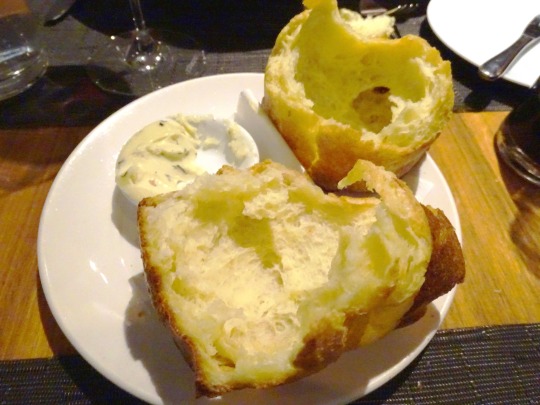
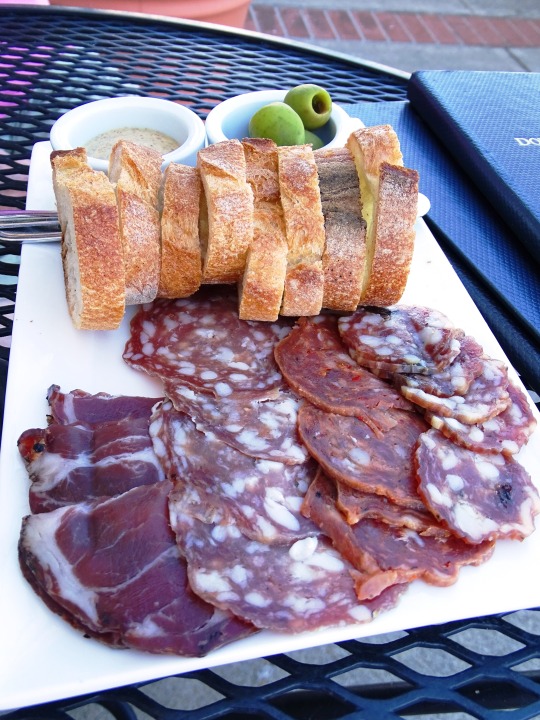
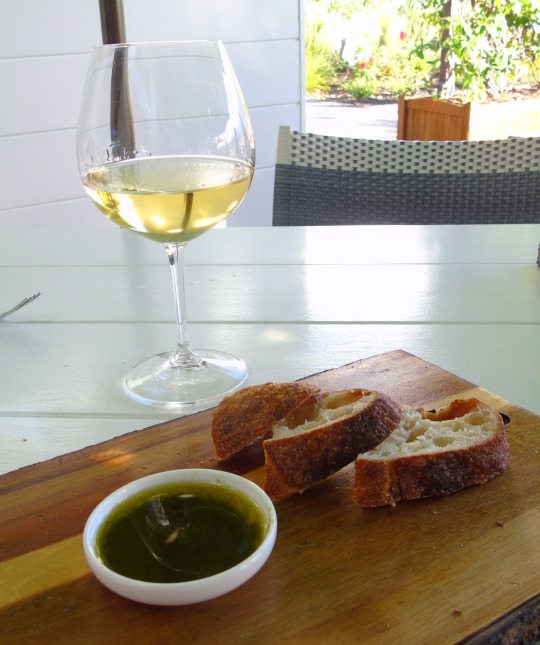
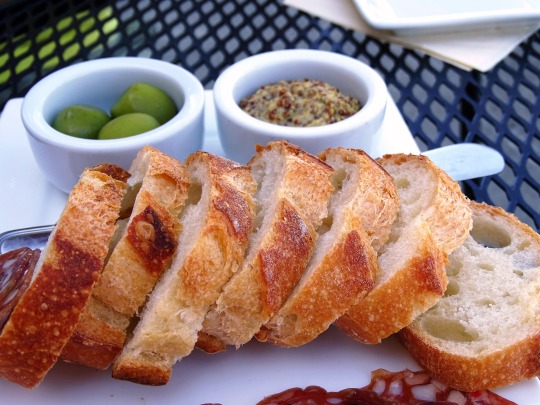

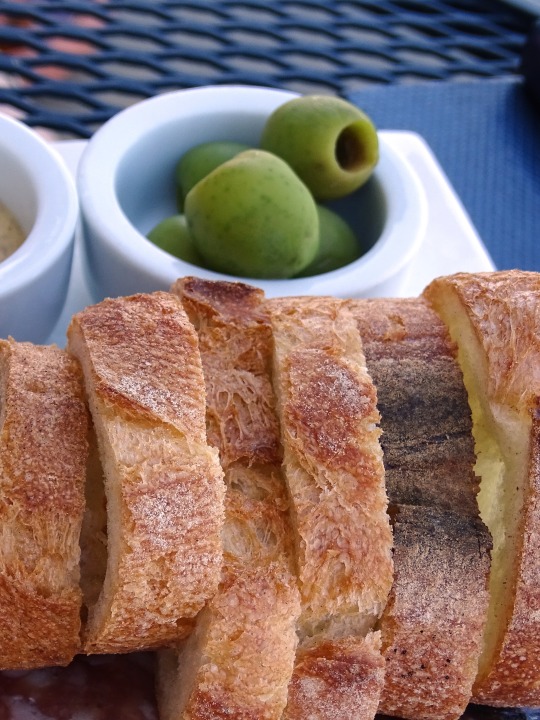


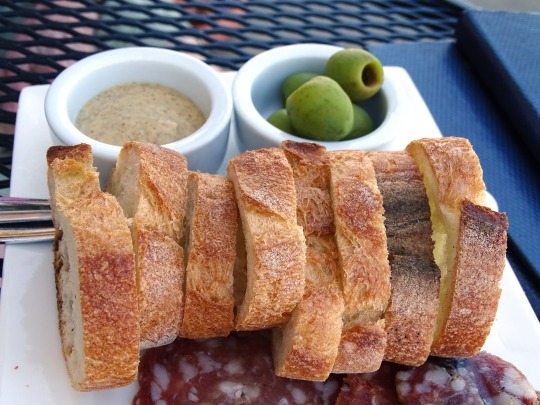
National French Bread Day
Oui, Oui, monsieur – please, pass me another loaf of French bread! Few things are more tantalising than a long, thin stick of French bread (also known as a baguette) enjoyed warm and fresh out of the oven. Its crispy crust and soft center are defining factors for this tasty treat. But before it even comes out of the oven, though, this bread beckons to anyone nearby who can enjoy the smell.
Because they must be eaten fresh, French people typically purchase their baguettes twice a day: one in the morning on their way to work, and one in the evening on the way home. While a little difficult to track, it is estimated by the Observatoire du Pain (The French Bread Observatory) that French people consume 320 baguettes every second of each day!
In fact, access to bread is so vital that, until 2014, Paris lawmakers prohibited certain community bakeries from closing for summer holidays at the same time, lest the entire neighborhood be tragically without bread!
National French Bread Day is a great opportunity to indulge in some classic comfort food at its finest, while also learning a little bit about French culture.
History of National French Bread Day
The French have been baking long sticks of bread for more than 200 years, but it was only in 1920 that the current baguette we know and love came into being.
During that time, a law was passed in France in 1920 that prohibited anyone from starting work before 4am, making it impossible for French bakers to get their traditional breads baked in time before all of the people went off to work. They needed a creative solution to make their bread bake faster, but they didn’t want to cheat their customers.
Voilà, the quick baking baguette was born!
During this time, the innovative French bakers discovered that bread made in this longer shape was actually convenient for cutting as well as for storage. What began as a creative way to speed baking time ended up as a revolutionary way to appreciate bread.
How to Celebrate National French Bread Day
Enjoying National French Bread Day doesn’t have to be complicated. It can be as simple as serving a lovely loaf of French bread warm, slathered with butter and a chunk of cheese on the side. Why not embrace the whole continental experience and have a glass of fine French wine with it? More, s’il vous plaît!
But, for those folks who absolutely love all things French–or those who just love a tasty baguette of French Bread–many more ideas come to mind for celebrating the day:
Learn to Make French Bread Baguettes
Although bread-making can sometimes be tedious, some people might really enjoy the challenge and sense of accomplishment that comes from making their own French Bread.
Traditional bakers of French bread use a starter that has been passed down through generations, which makes it a little difficult to recreate. Still, it’s worth a try!
Many recipes are available online or in cookbooks, but the basic ingredients are likely to include bread flour, sea salt, dry yeast and warm water. In fact, in order to be truly authentic, national law dictates that “French” Bread contains only these four ingredients.
Of course, when making it at home, other creative ingredients, such as seeds for topping, are subject to personal preference.
The steps for making French Bread are fairly simple, including mixing, kneading, allowing time for the dough to rise, and then rolling it into the proper baguette shape. The lack of preservatives make it so yummy–but also mean that it must be eaten right away, so don’t make it unless you’re also ready to eat it!
Dress as a Frenchman (or Woman)
The French are about as stylish and savvy as Europeans come, and their fashion is no exception. However, one specific idea comes to mind when thinking of a traditional French costume: the black and white striped shirt.
Get the look by donning a black and white striped shirt with elbow-length sleeves. Add a pair of plain black or red pants. A set of black or red suspenders would look great too. It might also be fun to draw on a curly mustache (with eyebrow pencil or mascara).
And for those who happen to have a poodle or who can borrow one, well that is certainly taking this costume to the next level. But the most important part of the outfit? The French beret on top, of course!
Once dressed up, if people ask why the costume, then it’s a great opportunity to tell them that it’s time to celebrate National French Bread Day.
Watch a French Film
One excellent way to embrace French culture from afar is to sit down comfortably in front of a French film–with a baguette in hand, of course!
Les Miserables, 2012 musical (based on the 1862 book by Victor Hugo and the 1987 Broadway musical adaptation) starring Hugh Jackman, Russell Crowe, Anne Hathaway and more. In the story, Hugh Jackman’s character went to jail for stealing bread.
La Vie En Rose, 2007 biopic of French singer, Édith Piaf, starring Maria Cotillard (who won an Oscar for the film).
Amélie (The Fabulous Destiny of Amélie), a 2001 fictional tale about a whimsical young woman in Paris who seeks to help those in the world around her.
French Kiss, 1995 romantic comedy starring Meg Ryan and Kevin Kline.
Learn to Speak a Little French
Embracing the fullness of French culture, it’s fun to learn a few French words to practice with friends. Try out these basic words to celebrate National French Bread Day:
Pain (pronounced like the English “pan”): Bread
Bonjour: Hello, Good morning
Au revoir: Goodbye
Oui (pronounced like the English “we”): Yes
Non: No
Merci: Thank you
Enjoy Many Types of French Breads
Of course, the baguette isn’t the only bread that France has offered the world. Those who can locate a nearby French bakery are in luck and may find all kinds of treats to appreciate on National French Bread Day, including croissants, pain au chocolat, brioche, batard, and much more!
Source
#charcuterie board#olives#mustard#salami#jamon#ham#baguette#brioche#Brix Restaurant & Gardens#Jacobs & Co. Steakhouse#Canada#Domaine Carneros#food#appetizer#olive oil#white wine#travel#USA#restaurant#Nick & Stef's Steakhouse#National French Bread Day#21 March#NationalFrenchBreadDay#summer 2022#2019#2018#patio seating#tourist attraction#Napa Valley#original photography
1 note
·
View note
Text
Nocturnal Daisy
She simmers diced apples in a milk-pan with honey. At dawn, she cooks the confiture with overripe and rotten fruits. An apple that she found in the backyard of her apartment is Red Delicious, it has been forgotten in the back of the refrigerator for a week. Preserving the sweet sweetest Red Delicious with honey in amber colour is a dream she has just before waking up. Suddenly, a knife-wielding man is reflected on the surface of the glass jam jar, to which the confiture has been transferred from the pan. No, a hairtail in a shiny, water-repellent tailcoat sparkles in the morning sun outside her window. She recognizes it as usual. Since the factories were closed in the town that once prospered with paper manufacturing, most of the private houses and shops have been abandoned. Surrounded by deep forest, the island is a quiet town under the ocean. The hairtail mimics the sunlight shining into the deep sea. He stands at about the same height as an adult human male, swims in a thin and flat body, emits a silvery steel blue colour on the seabed. The hairtail is laughing, showing his sharp and ferocious teeth.

She goes to work at 8:00 am at the same time as the only bakery in the town opens. While relying on the good smell of yeast, a sleepwalker in her dream feels the gentle flow of the sea and arrives at the store. A boulanger, the bakery owner sleeps together with the dough kneaded after the sunset and bakes the breads from 2:30 am, before sunrise. Waiting for a store clerk, he puts out Danish pastries, croissants, baguettes in the display rack to cool. She is in love with him. In her imagination, she is in love with the bakery owner who will go to bed at 8:00 pm, get up at midnight, wear a toque blanche and start baking breads. When she fantasizes about the stories between the pages of books in the dark, he may be sweating with the heat of the oven. In the dim light of the kitchen, he must be stirring the sugar and egg white with hazelnuts and lemon juice until meringue will become the sweet foam. But, in fact, she does not know who the store owner really is. An old lady comes to the store every morning and buys a pie baked with chocolate syrup and custard cream spread in thin layers between the dough. The store owner carefully wraps the pie in translucent waxed paper. The old lady is in love with the pie. The beautiful pie, like the ancient strata that have their own histories on the ocean floor. Like the stories of each pebble that might have been brought by many years of river flow.
"Would you take home the edge of the white bread? I have cut it too thin and you see, there was a hole in the middle."
The bakery owner closes the store late in the afternoon and gives me a piece of unsold bread. "Make an apple confiture sandwich for a midnight snack. Watch out for the hole," he says, looking at the woods through the hole in the middle of the bread. "Be careful not to fall from the hole into the darkness forever. The time in the forest at night is deep and long," he says, wrapping his whole body in a hoodie as if he is changing into a diving suit in preparation for the coldness. Then he melts into the cove at dusk.

In her room, she is reading books left behind by the closed paper mills and printing factories. The books, having seen better days, are shabby due to the humidity of the sea breeze and the sighs of the trees in the forest. A silverfish lives in the books. Silverfish is not a fish. Its name comes from the appearance of wearing shiny scales. It is a nocturnal insect that usually lives in old books and eats used paper, blurred black and white photographs, and bookbinding glue. The silverfish running away from the light seems to be a fish swimming in a rock reef. As she turns the page of a book in her study under the stairs, the silverfish swiftly escapes under the wooden floor, scared by the suddenly lit lamps. Tonight, she intends to lie down on the couch and enjoy the rest of a story with apple confiture put into a cup of tea. However, there are many holes in the pages. The silverfish eats the pages she has just finished reading, so she cannot reread the texts she inadvertently passed by.
‘If it wasn’t for the mist we could see your home across the bay,’ said Gatsby. ‘You always have a green light that burns all night at the end of your dock…’ Possibly, it had occurred to him that the colossal significance of that light had now vanished forever. Compared to the great distance that had separated him from Daisy it had seemed very near to her, almost touching her. It had seemed as close as a star to the moon.
Part of Chapter 5 in the novel The Great Gatsby, written by F. Scott Fitzgerald in 1925, has been eaten up by the silverfish. Someday, the silverfish's stomach will be full of letters. In the end, even the leftover letters will be lost after the traces of the silverfish have gone. She pours a drop of brandy into Darjeeling tea. Her memory fades. Finally, she fills the brandy to the brim of teacup. She falls asleep, even though the hands of clock only point to 9:30 pm. It dawns on her that the light of memories and stories has now vanished forever.

✽ ✽ ✽
About This Story: The heroine of this story dreams in her dream and loses a dream in her dream. Many stories and histories that have been handed down all around the world for a long time are nothing more than illusions. She obtains an ecstatic experience due to the contact with the flow of the time or place in illusion. Chocolate Daisy blooms in the night. The nocturnal flower will give off an ephemeral sweet scent and emit the dim light in the dark.
✽
Short Story & Art Work // Nocturnal Daisy
© hiromi suzuki, 2021
published in époque press the 10th edition of é-zine on the theme ‘Ecstasy’ (October 1, 2021)
…
via époque press
#hiromi suzuki#short fiction#short story#Art Work#GIF Poetry#collage#photo-collage#photography#visual poetry#poetry magazine#poetry journal#literary journal#époque press
2 notes
·
View notes
Note
Do you like to cook and/or bake? If so, what's something you like to make, or are good at making, or something you'd like to learn or get better at making?
I do! I am gluten intolerant and I’m very particular about how sweet some foods are so most baked goods I make at home. I’m not the greatest at baking with yeast as creating the ideal conditions with heat/moisture/flour blend can be tricky, but I’d like to get better at making baguettes/bread. I really like the blog Gluten-free on a Shoestring, the lady who runs it has done some really great research on GF flours. I adapted her yeast-free cinnamon rolls recipe to my liking and really enjoy them when I make them! I want to have em again soon now that the weather’s cooled down a bit.
27 notes
·
View notes
Text
Soft White Bread
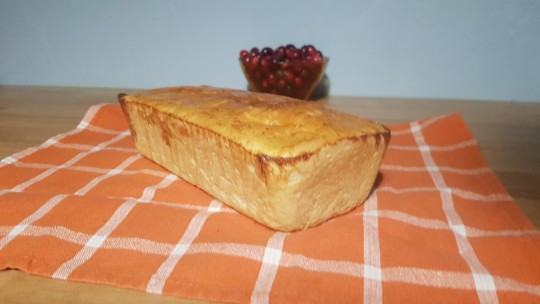
This beautifully fluffy Soft White Bread makes great breakfast toasts to slather with butter and Marmalade, is precfet for tea-time Finger Sandwiches, and is very easy to make when you don’t fancy walking to the bakery on a rainy day! Happy Saturday!
Ingredients (makes 3 medium baguettes):
1/2 cup lukewarm water
1 level tablespoon active dry yeast
2 ½ cup strong white flour
1 teaspoon salt
40 grams/1.40 ounce cold unsalted butter, cut into small chunks
½ cup milk, at room temperature
1 egg
1 teaspoon milk
Pour water in a large bowl. Sprinkle in yeast, and stir well until well-blended. Set aside, a couple of minutes until yeast is dissolved.
In a medium bowl, combine strong white flour and salt; give a good stir. Rub butter into the flour mixture, between your fingers, until it resembles coarse meal.
Stir milk into the yeast mixture.
Add flour mixture to the yeast mixture, stirring with a wooden spoon until a dough starts forming. Tip dough onto a very lightly floured surface, and knead for a good ten minutes, until dough is soft and elastic.
Pop dough into one of the bowls, and cover with a tea towel or cling film. Prove, for about 40 to 45 minutes, in a warm, draft-free place.
Butter a loaf tin and line with baking paper. Set aside.
Tip dough onto the counter-top, and knead again, about five minutes. Shape into a loaf, and place in prepared tin. Cover with a tea towel. Prove again, for an hour.
Preheat oven to 215°C/420°F. In a small bowl, whisk the egg and milk together. Gently brush the top of the loaf with egg wash.
Place tin in the middle of the hot oven. Bake, at 215°C/420°F, for about 20 minutes, until a lovely golden brown colour.
Remove from the oven, and let Soft White Bread cool in the tin, 10 minutes. Then, remove from the tin and et cool completely. Serve, toasted or not, slathered with butter!
#Recipe#Food#Soft White Bread#Soft White Bread recipe#White Bread#White Bread recipe#Bread#Bread recipe#Bread and Breadstick#Baking#Baking recipe#Flour#Strong White Flour#Salt#Yeast#Water#Milk#Butter#Easy recipe#5 Ingredients or Less
12 notes
·
View notes